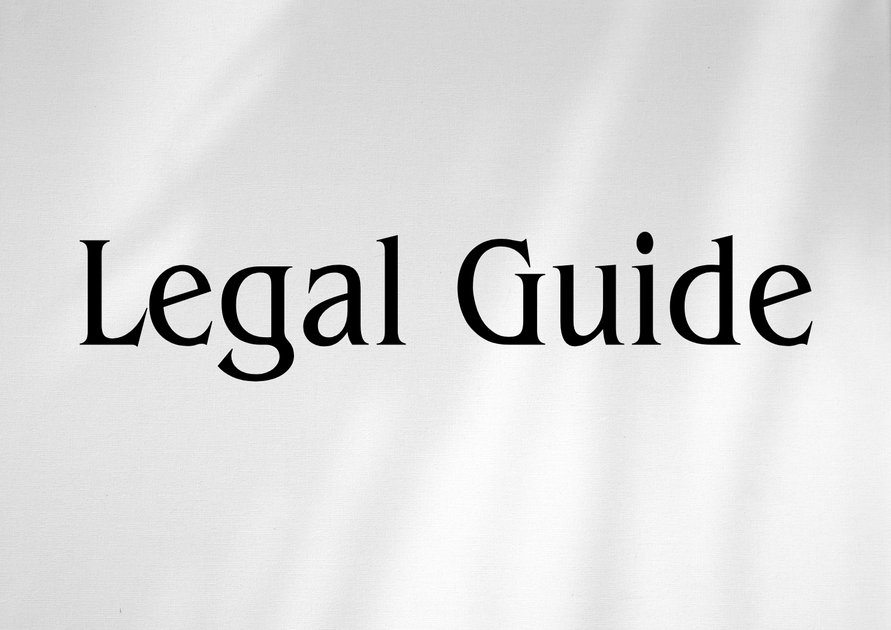Introduction: The Growing Landscape of Aviation Regulation in the UAE
The aviation industry in the United Arab Emirates (UAE) has witnessed exponential growth, firmly establishing the region as a global nexus for international travel and commerce. With the UAE’s strategic location and continuous investments in aviation infrastructure, the legal oversight of air carriers has become more pertinent than ever. Against this evolving backdrop, the General Authority of Civil Aviation (GACA) plays a pivotal role in regulating the aviation sector to ensure safety, security, and compliance with international and local standards.
This article provides an authoritative analysis of GACA’s regulatory oversight of air carriers, with a particular focus on recent UAE law updates and compliance requirements for 2025 and beyond. Legal practitioners, business executives, compliance officers, and HR managers will find a detailed examination of statutory frameworks, practical compliance insights, comparisons of previous and current legislations, and real-world case analyses. Our objective is to offer a consultancy-grade briefing rooted in official UAE sources, equipping stakeholders to navigate the complexities of aviation regulatory compliance with confidence.
Table of Contents
- Overview of GACA’s Role in UAE Aviation Regulation
- Statutory Framework Governing Air Carrier Regulation
- Key Oversight Mechanisms and Enforcement Powers
- Comparing Past and Recent Regulations
- Practical Applications and Compliance Strategies
- Case Studies: Lessons from Enforcement and Compliance
- Risks of Non-Compliance and Legal Consequences
- Strategic Recommendations for UAE Businesses
- Conclusion: Shaping the Future of Aviation Law and Compliance in the UAE
Overview of GACA’s Role in UAE Aviation Regulation
Mandate and Legal Authority
The General Authority of Civil Aviation (GACA) is the principal body responsible for the regulation and oversight of civil aviation activities in the UAE. Established under Federal Law No. (20) of 1991 and subsequently reinforced with Federal Decree-Law No. (4) of 1996 (as amended), GACA’s primary objectives include promoting aviation safety, protecting passenger rights, monitoring operator compliance, and ensuring alignment with International Civil Aviation Organization (ICAO) standards.
Strategic Objectives
GACA’s strategic framework centers on:
- Ensuring the highest levels of safety and security in UAE airspace and airports.
- Harmonizing UAE regulations with international best practices, particularly ICAO guidelines.
- Enforcing robust compliance mechanisms for local and foreign air carriers operating within the UAE.
- Fostering sustainable growth and innovation in the aviation sector.
Statutory Framework Governing Air Carrier Regulation
Key Legislation and Regulations
The legal foundation for GACA’s regulatory powers is built upon several primary statutes, which have undergone periodic updates to address emerging challenges and industry developments. The most relevant legal instruments include:
- Federal Law No. (20) of 1991 on the regulation of civil aviation, setting forth the responsibilities and authority of GACA.
- Federal Decree-Law No. (4) of 1996 on civil aviation safety, outlining obligations for airline operators and penalties for violations.
- Ministerial Decision No. (202) of 2011 concerning air transport and licensing requirements.
- Recent Amendments Through Cabinet Resolutions in 2023 and 2024: Revising compliance standards, introducing stricter oversight on safety management systems (SMS), mandatory reporting requirements, and enhanced enforcement measures.
Alignment with International Standards
In parallel with local law, GACA aligns UAE aviation regulation with ICAO’s Annexes to the Chicago Convention, particularly Annex 6 (Operation of Aircraft), Annex 13 (Aircraft Accident and Incident Investigation), and Annex 17 (Security). This ensures the UAE’s integration within the global aviation legal framework, essential for international carriers and commercial operations.
Key Oversight Mechanisms and Enforcement Powers
Certification, Licencing, and Authorization
GACA requires all air carriers, both national and foreign, to secure appropriate certifications, Air Operator Certificates (AOC), and licenses before commencing operations in UAE airspace or airports (Federal Law No. (20) of 1991, Articles 9-14). The application process entails rigorous vetting of safety measures, operational reliability, technical staff competency, and financial stability.
Important compliance considerations:
- Operators must submit detailed Safety Management Systems (SMS) documentation during certification and demonstrate ongoing compliance through periodic audits.
- Licenses are subject to renewal and may be suspended or revoked in cases of breach or non-compliance.
Safety Oversight and Audit Programs
GACA performs comprehensive oversight through:
- Scheduled and random inspections of air carriers, focusing on aircraft maintenance, crew training, and operational protocols.
- Continuous monitoring through electronic reporting platforms introduced under the Digital Governance Initiative 2024.
- Imposing corrective action plans and timelines on operators found to be in breach.
Enforcement and Sanctions
The regulatory authority of GACA permits a graduated scale of enforcement, ranging from warning letters to administrative penalties, suspension of operating licenses, and, in serious cases, criminal prosecution under Federal Decree-Law No. (4) of 1996 (Articles 21–29).
Recent legal updates (Federal Law Update 2025):
- Stricter penalty thresholds for repeated violations.
- Mandatory public disclosure for serious breaches affecting public safety or customer rights.
- Cooperation with the Public Prosecution for violations involving fraud, sabotage, or gross negligence.
Comparing Past and Recent Regulations: Structured Legal Analysis
Regulatory Changes in 2023–2025
The UAE has undertaken significant reforms to adapt aviation regulation to fast-changing risks and international requirements. The following table illustrates key differences between the previous and recent regulatory regimes:
| Aspect | Pre-2023 Regulation | 2023–2025 Updated Regulation |
|---|---|---|
| Licencing Renewal Period | Every 3 years | Annually for high-risk operators; 2 years for others |
| Safety Management Systems (SMS) | Encouraged, not mandated | Mandatory for all operators, periodic SMS audit required |
| Enforcement Powers | Administrative warnings and fines | Escalating penalties; criminal referrals for gross breaches |
| Reporting Requirements | Quarterly incident reports | Immediate electronic notification; real-time data submission |
| Foreign Carrier Compliance | ICAO standards evaluated case-by-case | Uniform standards applied irrespective of carrier origin |
| Transparency | Internal reporting | Mandatory public disclosure for major violations |
Consultancy Insight
The increased frequency of audits, enhanced transparency, and stricter reporting align the UAE’s aviation compliance environment with leading international jurisdictions, thereby mitigating reputational and operational risks for compliant air carriers.
Practical Applications and Compliance Strategies
Licensing and Certification Best Practices
Companies seeking to operate within the UAE must engage early with GACA’s Aviation Safety Affairs sector to establish compliance pathways and address regulatory expectations. The following compliance checklist is recommended:
| Compliance Step | Recommendation |
|---|---|
| Document Preparation | Submit a comprehensive operations manual, risk identification, and SMS documents during application. |
| Internal Training | Regular staff and crew training on evolving GACA requirements and best practices. |
| Renewal Monitoring | Set up digital alerts for license renewal and audit deadlines. |
| Third-Party Verification | Engage certified aviation law consultants for compliance audits and gap analyses. |
Digital Governance and Data Integrity
Building on the UAE’s broader Smart Government Initiative, GACA has digitized much of its regulatory supervision. Air carriers must ensure secure data submission, compliance with UAE data protection rules (as per Federal Decree-Law No. (45) of 2021 on the Protection of Personal Data), and readiness for real-time system audits.
Contractual Risk Management
When contracting with suppliers or foreign carriers, organizations should:
- Include representations & warranties clauses to ensure all parties meet GACA requirements.
- Incorporate indemnity provisions for breaches that result in regulatory sanctions.
- Utilize standard operating procedures reviewed regularly by in-house or external legal advisors.
International Operators: Harmonizing Global and Local Standards
Foreign air carriers must align operational policies with GACA’s strict compliance standards to secure operating rights within the UAE. Proactive legal consultation is essential to anticipate potential conflicts of law and bridge gaps with home country regulations.
Case Studies: Lessons from Enforcement and Compliance
Case Study 1: Non-Compliance with Reporting Obligations
Background: In 2023, a Middle Eastern airline was sanctioned under GACA’s updated rules for delayed notification of a ground incident involving a technical malfunction.
Legal Insight: GACA deemed this a breach of immediate reporting obligations (Federal Law No. (20) of 1991, Article 15 as amended), leading to temporary suspension of flight operations and a substantial administrative penalty.
Lesson: An automated incident reporting system, coupled with legal counsel vetting incident disclosures, is critical to preserving operational continuity and reputation.
Case Study 2: Enhanced Safety Management in Practice
Background: Following the 2024 regulatory update, a UAE-based carrier invested heavily in SMS and adopted real-time compliance monitoring tools, resulting in a highly commended audit outcome and expanded route authorizations.
Legal Insight: Demonstrating proactive commitment to safety and compliance not only mitigates risk but can also serve as a differentiator in regulatory negotiations and stakeholder engagement.
Case Study 3: Legal Risks in International Operations
Background: A European airline operating in the UAE was cited for discrepancies between GACA-mandated documentation and home jurisdiction requirements.
Legal Insight: Dual compliance reviews and regular cross-jurisdictional legal audits are necessary to avoid inadvertent breaches that may trigger GACA sanctions or contractual liabilities.
Risks of Non-Compliance and Legal Consequences
Penalties and Liabilities
The risks associated with non-compliance are substantive and multi-faceted, including:
- Administrative fines ranging from AED 100,000 to AED 5 million, depending on the infraction.
- Temporary or permanent suspension of operating licenses.
- Public disclosure of violations—potentially harming consumer trust and business relationships.
- Criminal prosecution of responsible personnel for willful misconduct or gross negligence (Federal Decree-Law No. 4 of 1996).
- Civil litigation arising from breaches, including compensation claims.
See the visual suggestion below for a comparative penalty chart:
| Violation Type | Penalty Pre-2023 | Penalty 2023–2025 |
|---|---|---|
| Late Incident Reporting | AED 50,000 fine | AED 200,000 + suspension possible |
| Lack of SMS | Warning letter | License suspension + public notice |
| Operating Without License | AED 500,000 | Criminal referral + license revocation |
Reputation and Market Impact
Sanctions imposed by GACA are subject to mandatory public disclosure under Cabinet Resolution (No. 81) of 2023, raising the stakes for regulatory lapses. Companies must factor reputational risk into internal governance and control frameworks.
Strategic Recommendations for UAE Businesses
Implementing Robust Compliance Frameworks
Legal consultancy firms should advise clients to establish multidisciplinary compliance teams, integrating legal, technical, and operational expertise. Key steps include:
- Conducting comprehensive risk assessments based on the latest GACA regulations.
- Deploying automated compliance management platforms to track and report compliance in real time.
- Institutionalising continuous professional development and scenario-based employee training on regulatory requirements.
Proactive Engagement with GACA
Maintain regular dialogue with GACA officials and legal advisors to clarify ambiguous provisions and anticipate forthcoming regulatory changes—particularly in view of ambitious UAE Vision 2030 initiatives and preparations for future international aviation events.
Documentation and Record-Keeping
Organizations should maintain auditable records of all operational, safety, and compliance activities, leveraging secure digital storage systems aligned with UAE data protection rules (Federal Decree-Law No. 45 of 2021).
External Legal Audit and Independent Review
Periodic independent legal audits help to identify compliance gaps, new regulatory risks, and best practices, ensuring businesses remain prepared for GACA’s evolving oversight programs.
Conclusion: Shaping the Future of Aviation Law and Compliance in the UAE
The regulatory landscape for air carriers operating under GACA’s oversight is a testament to the UAE’s commitment to international best practices, passenger safety, and robust legal governance. With enhanced enforcement powers and rigorous compliance expectations, stakeholders must proactively adapt to recent legal developments to sustain operational continuity and market access.
As the aviation sector continues to expand in strategic significance, legal practitioners and business leaders are urged to stay ahead of legislative updates, invest in compliance infrastructure, and foster a culture of legal diligence. The future of aviation law in the UAE will be defined by adaptability, transparency, and innovation—qualities that should inform every compliance strategy in 2025 and beyond.
Suggested Visuals
- Penalty Comparison Chart: Illustrates the escalation of legal penalties pre- and post-2023 reforms.
- Compliance Checklist: A flowchart outlining step-by-step compliance actions for air carriers.
- Enforcement Process Diagram: Visualizing the escalation path from audit to enforcement action.
All visuals should be accessible, clearly captioned, and referenced in explanatory text for maximum reader engagement.



